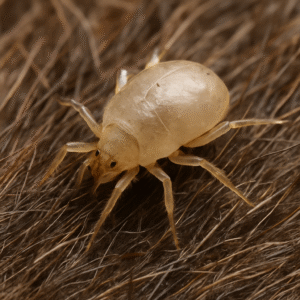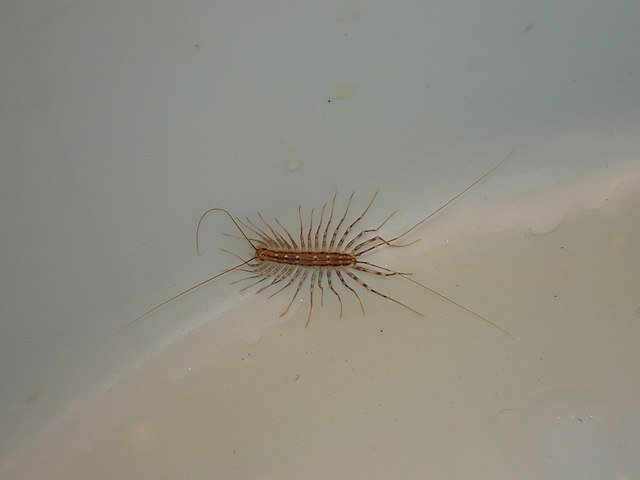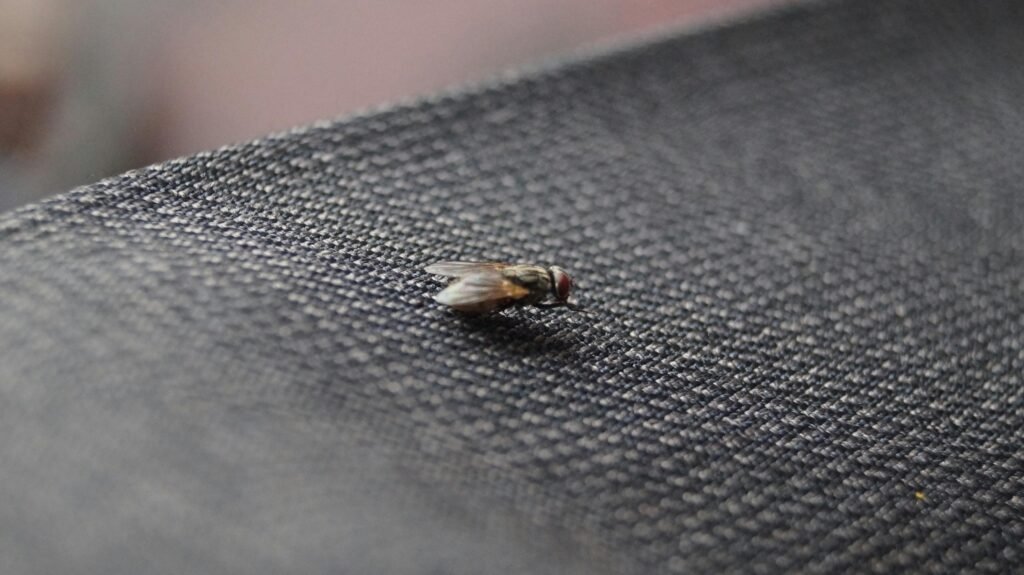Rodent Mites: Identification, Risks, and Control Strategies
 Rodent mites are tiny parasitic arachnids that thrive on small mammals, particularly rodents such as rats and mice. Scientifically classified under the order Mesostigmata, the most significant species affecting humans include the tropical rat mite (Ornithonyssus bacoti), the house mouse mite (Liponyssoides sanguineus), and the spiny rat mite (Laelaps echidnina). These mites are hematophagous, relying exclusively on blood meals for survival.
Rodent mites are tiny parasitic arachnids that thrive on small mammals, particularly rodents such as rats and mice. Scientifically classified under the order Mesostigmata, the most significant species affecting humans include the tropical rat mite (Ornithonyssus bacoti), the house mouse mite (Liponyssoides sanguineus), and the spiny rat mite (Laelaps echidnina). These mites are hematophagous, relying exclusively on blood meals for survival.
Although they naturally parasitize rodents, rodent mites are notorious for biting humans when their primary hosts are scarce. Unlike household pests such as Fruit flies (Drosophila spp.) or Blow flies (Calliphoridae), which are drawn to organic matter, rodent mites target warm-blooded animals, including people. Their bites cause itching, irritation, and in rare cases, transmission of diseases.
This article provides a comprehensive overview of rodent mites—covering identification, ecology, global distribution, health implications, infestation signs, and control measures—while also touching on their cultural context and relevance in modern pest management.
Identification
General Features
Size: Adult mites are extremely small, usually 0.5–1 mm long, making them nearly invisible to the naked eye.
Coloration: Translucent or whitish when unfed; turn reddish or dark brown after feeding on blood.
Body shape: Oval, with eight legs typical of arachnids.
Mobility: Fast-moving, capable of leaving rodent nests in search of new hosts.
Key Species
Tropical rat mite (Ornithonyssus bacoti) – the most common species found worldwide in association with rats.
House mouse mite (Liponyssoides sanguineus) – primarily infests mice, but can also bite humans.
Spiny rat mite (Laelaps echidnina) – often linked with wild rodents but occasionally moves indoors.
These mites can be confused with bird mites, especially when infestations occur indoors. Correct identification under a microscope is crucial for effective treatment.
Biology and Ecology
Rodent mites are obligate parasites, meaning they depend on blood meals for survival. Their life cycle follows a typical pattern for parasitic mites:
Egg stage: Laid in rodent nests, bedding, or cracks near rodent activity areas.
Larvae: Six-legged, non-feeding stage.
Nymphs: Eight-legged, active feeders.
Adults: Fully developed, with both males and females feeding on hosts.
Under favorable conditions (warm temperatures, available hosts), rodent mites complete their life cycle in 7–16 days. Their survival off-host varies, but they can persist for several days to weeks in indoor environments, actively seeking alternative blood sources.
Feeding Behavior
Rodent mites pierce the skin of their hosts and feed on blood. If rodents die, move away, or populations decline, mites migrate to nearby humans or pets. This opportunistic behavior explains sudden outbreaks of bites in homes after rodent extermination.
Global Distribution
Rodent mites are found wherever rodent populations thrive. Their distribution is tied closely to human habitation and rodent presence:
North America: Infestations occur in urban and rural settings, especially in buildings with house mice or roof rats.
Europe: More commonly associated with old buildings, warehouses, and grain storage facilities.
Asia: Tropical rat mites are widespread, often linked to dense urban rodent populations.
Australia and Africa: Less frequently reported but present wherever rodents exist.
Their global prevalence makes them important pests in pest control, similar to issues caused by Pigeons (Columba livia), which spread mites, fleas, and ticks when nesting near homes.
Risks and Damage
Health Risks to Humans
Bites: Cause itching, redness, and skin irritation; often mistaken for bedbug or flea bites.
Allergic reactions: Some individuals develop stronger skin responses, leading to rashes or dermatitis.
Disease transmission:
Liponyssoides sanguineus is a known vector of Rickettsialpox, caused by Rickettsia akari.
Other species may mechanically transmit pathogens between rodents and humans.
Risks to Pets
Rodent mites may also feed on small pets like hamsters, guinea pigs, or rabbits, particularly when infestations are severe.
Structural and Social Impact
While they do not damage structures like termites or powderpost beetles, rodent mites create psychological stress and discomfort due to their biting behavior. Repeated infestations often signal hidden rodent populations inside buildings.
Signs of Infestation
Identifying rodent mite infestations can be challenging because of their microscopic size. Key indicators include:
Unexplained bites – itchy red welts, often in clusters.
Increased rodent activity – droppings, gnaw marks, or scratching sounds in walls.
Rodent nests – especially in attics, basements, or behind appliances.
Mite sightings – tiny moving dots on walls, furniture, or bedding, visible under magnification.
Mite infestations often appear suddenly after rodent extermination, when mites abandon dying or dead rodents.
Control Methods
Step 1: Address the Rodent Source
Seal entry points to prevent rodent access.
Use traps or baits to reduce populations.
Remove nests, droppings, and rodent harborage areas.
Step 2: Environmental Sanitation
Vacuum and clean areas thoroughly to remove mites.
Dispose of contaminated nesting material in sealed bags.
Wash bedding and fabrics in hot water.
Step 3: Chemical Control
Residual insecticides (pyrethroids or other approved products) may be applied to rodent runways, cracks, and baseboards.
Avoid indiscriminate spraying; treatments should be targeted.
Step 4: Professional Pest Management
Given their association with rodents, rodent mite infestations often require integrated pest management (IPM) approaches by licensed professionals.
Advanced Approaches
Monitoring: Sticky traps and mite collection for species identification under a microscope.
Biological control: Still under research; predatory mites show potential in laboratory settings.
Public health coordination: In large urban infestations, rodent and mite management often requires city-level pest control programs.
Cultural and Historical Context
Rodent mites, like many parasitic arthropods, have influenced public health concerns throughout history. During the mid-20th century, outbreaks of Rickettsialpox in New York were directly linked to house mouse mites. Such events highlighted the hidden risks of urban rodent infestations.
In literature and medical history, rodent mites are often overshadowed by fleas (vectors of plague) or lice. However, their persistence in modern cities underscores how close contact between humans and rodents continues to pose risks, much like the nuisance caused by Pigeons in crowded environments.
FAQ
Q1: Are rodent mites visible to the naked eye?
A: They are extremely small (less than 1 mm), making them difficult to see without magnification.
Q2: Do rodent mites live on humans permanently?
A: No, they do not establish permanent colonies on humans. They bite opportunistically when rodents are absent.
Q3: Can rodent mites transmit diseases to humans?
A: Yes, Liponyssoides sanguineus is a vector of Rickettsialpox. Other species may also play a role in pathogen transmission.
Q4: How do I know if I have rodent mites or bedbugs?
A: Mite bites often appear similar to bedbug bites. Microscopic identification is necessary for confirmation.
Q5: Will rodent mites die if rodents are eliminated?
A: Not immediately. They can survive days to weeks without hosts and may migrate to humans during this period.
Q6: Can pets get rodent mites?
A: Yes, small pets like hamsters or guinea pigs may be affected when infestations are heavy.
Q7: Are pesticides alone enough to eliminate rodent mites?
A: No, rodent control is essential. Without eliminating the rodent source, mites will continue to infest.
Final Thoughts
Rodent mites may be small, but their impact on human comfort and health can be significant. Unlike Fruit flies (Drosophila spp.) or Blow flies (Calliphoridae), which are primarily nuisance pests, rodent mites pose direct health threats by biting humans and potentially transmitting pathogens. Their presence is often a symptom of a larger problem—hidden rodent populations inside buildings.
Effective management of rodent mites requires a two-pronged approach: eliminate the rodent hosts and directly address mite infestations. Ignoring either side of this equation leads to recurring problems. In urban environments, close cooperation between homeowners, pest control professionals, and public health authorities is often necessary to prevent widespread infestations.
Ultimately, rodent mites are a reminder that pest management goes beyond surface-level treatments. A true integrated pest management (IPM) strategy—combining sanitation, exclusion, monitoring, and targeted treatments—is the best path toward lasting control.
Disclaimer
This article is for informational purposes only. Pest control laws and approved chemicals vary by country. For best results and legal safety, we strongly recommend contacting a licensed pest control professional in your local area. Always make sure that the pest control technician is properly certified or licensed, depending on your country’s regulations. It’s important to confirm that they only use approved products and apply them exactly as instructed on the product label. In most places in Europe, UK, or USA, following label directions is not just best practice—it’s the law.
Author Bio
Nasos Iliopoulos
MSc Agronomist & Certified Pest Control Expert
Scientific Director – Advance Services (Athens, Greece)
Licensed Pest Control Business – Ministry of Rural Development & Food (GR)
References
Wikipedia – Rodent mite dermatitis
Wikipedia – Ornithonyssus bacoti


